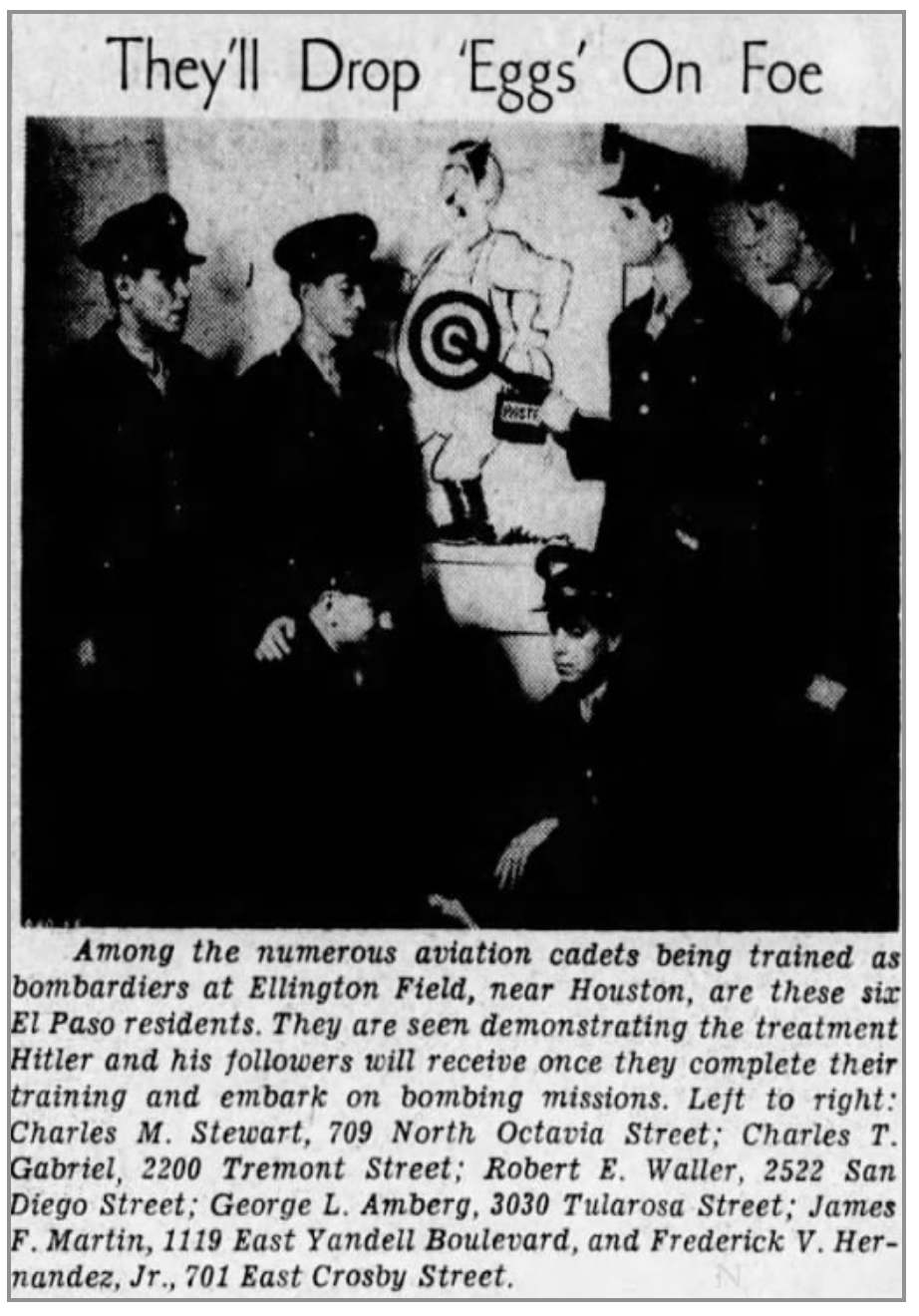A Gathering of Men
by Margaret Blagg
Daughter of Lt. Joe Blagg
Navigator, 336th Bomb Squadron
They came from city and hamlet, woods and farmland, from coast and plain: boys, most of them, whom the War would christen men. Many began their journey by registering at their hometown post office. The majority may have dreamed of becoming pilots, but what they “might like to do” was not always what the Army Air Force had in mind for them. By a process obscure to those going through it, the Army sorted the men into the myriad positions and units necessary to constitute a heavy bombardment group and sent them for further training across the country.
The newly activated 95th Bomb Group, with some wives in tow, began organizing and training at Geiger Field, WA in August 1942. Following early training at Geiger Field and Ephrata, WA, the Group moved to Rapid City, SD to complete its initial training before shipping out overseas.
Many of the men who served with the 95th during World War II never flew a combat mission. They were the men on the ground who battled to keep the B-17s in the air and provided everything from meals to weather reports. These men trained at places like Chanute Field, IL, where the schools for airplane mechanics and electrical specialists were. The units stationed at Horham formed what was in reality a small town with the administration and ancillary services any municipality needs to function. The airfield had its own hospital, cinema, chapel, and clubs. It had cooks, nurses, and mechanics, and various administrators, in addition to other specialized positions.
El Paso Times (El Paso, TX) 18 Feb 1943
Note: George Amberg served with the 95th Bomb Group
The B-17 crews comprised the following positions: pilot (aircraft commander), co-pilot (back-up to pilot), navigator (determined plane’s position), bombardier (delivered the payload on target), flight engineer (top turret gunner, monitored engine health), radio operator (handled communications), waist gunners (2, defended against enemy attack at midsection), ball turret gunner (defended against enemy attack from below), and tail gunner (defended against enemy attack from behind). Each position received specialized training. The 95th BG crews were organized into four squadrons: 334th, 335th, 336th, and 412th.
By sea and air, the men of the 95th BG traveled to England. The ground elements of the original cadre sailed on the Queen Elizabeth on May 5th, arriving in Greenock in Scotland on May 11th.
Pilots picked up their planes from U. S. factories and went to various bases to collect crew members before flying overseas. The northern route to England took crews to Bangor, ME; Goose Bay, Labrador; Reykjavik, Iceland; and to Nutts Corner, Belfast, Ireland or Prestwick, Scotland. Often the crews had to leave “their” brand-new aircraft in Scotland and go by train to the base, where they were subsequently assigned another plane. The southern route took planes and crews to Puerto Rico, British Guiana, Belem and Natal in Brazil, Dakar and Marrakech in North Africa, and St. Eval in England before finally flying to base.
One of the original pilots, Robert C. (Bob) Cozens related the story of making the long crossing from Brazil to Africa. Upon approaching the great continent, he kept querying his navigator, a last minute replacement on the crew, about their time of arrival, and was assured they were on course. Finally, Cozens said, “You know Africa is a big place. Why can’t I see it?” It turns out fog was obscuring the horizon, but they did arrive on time and on course.
Once in place, this collection of men from throughout the U. S. set about to do the jobs for which they had been trained. Hard-won experience, however, turned out to be the best trainer.

